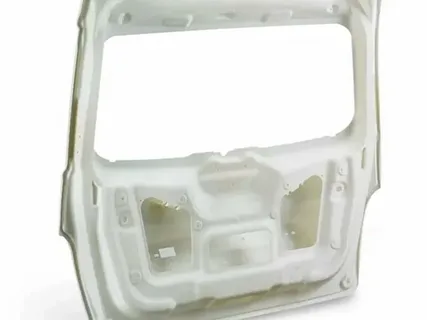ABS M30 is one of the most widely used engineering-grade thermoplastics in 3D printing, particularly within Fused Deposition Modeling (FDM) systems. Renowned for its exceptional mechanical strength, durability, and reliability, ABS M30 is a top choice for manufacturers, engineers, and designers across multiple industries. This material not only provides superior impact resistance and tensile strength but also ensures excellent dimensional stability, making it perfect for both functional prototypes and end-use parts.
In this comprehensive guide, we will explore ABS M30 material specifications, its unique properties, performance benefits, and why it remains a preferred material for high-performance 3D printing applications. By the end of this article, you will understand the technical aspects of ABS M30 and how it compares to other materials in terms of quality, application, and value.
What is ABS M30 and Why Is It Popular in 3D Printing?
ABS M30 is a high-quality thermoplastic derived from Acrylonitrile Butadiene Styrene (ABS), specifically engineered for Stratasys FDM 3D printing systems. It represents a significant advancement over standard ABS materials due to its improved mechanical properties and superior layer bonding, which contributes to stronger, more reliable printed parts.
The popularity of ABS M30 lies in its versatility and consistency. It offers an outstanding balance of strength, toughness, and heat resistance, which makes it ideal for functional prototyping, tooling, and even low-volume production parts. Additionally, ABS M30 is available in multiple colors and supports soluble support materials, making it user-friendly for creating complex geometries.
ABS M30 Material Specifications and Physical Properties
When discussing ABS M30 material specifications, several physical and mechanical properties make this thermoplastic stand out. Its base composition consists of acrylonitrile for chemical resistance, butadiene for impact strength, and styrene for rigidity, resulting in a material with excellent structural integrity.
Typical ABS M30 material specifications include:
-
Tensile Strength: Approximately 32 MPa (4,650 psi)
-
Flexural Strength: Around 58 MPa (8,430 psi)
-
Elongation at Break: 6%
-
Heat Deflection Temperature: 96°C (at 66 psi)
-
Density: 1.04 g/cm³
These figures highlight ABS M30’s suitability for producing strong and stable parts that maintain their properties under load and moderate heat conditions.
Performance Advantages of ABS M30 in Manufacturing
One of the biggest reasons manufacturers choose ABS M30 is its ability to deliver superior performance compared to standard ABS materials. Its enhanced layer adhesion ensures better structural integrity in 3D printed parts, reducing the risk of delamination and making it reliable for functional applications.
Another key performance advantage is its compatibility with soluble support materials, such as SR-30. This makes post-processing much easier and enables the production of intricate designs, hollow structures, and parts with complex overhangs without compromising quality. Additionally, ABS M30 offers repeatable and consistent performance, which is critical for industries like automotive, aerospace, and consumer goods.
Common Applications of ABS M30 Across Industries
ABS M30’s robust material specifications make it suitable for a wide range of applications. In the automotive industry, it is frequently used for creating functional prototypes, jigs, and fixtures that can withstand mechanical stress and testing conditions. Aerospace companies also rely on ABS M30 for lightweight, durable components used in non-flight critical areas.
Consumer product manufacturers leverage ABS M30 for producing concept models and end-use parts due to its aesthetic finish and durability. It is also widely used in medical device prototyping, industrial tooling, and electronics housings. These diverse applications demonstrate the material’s adaptability and reliability across multiple sectors.
Why ABS M30 is a Smart Choice for High-Performance Projects
Choosing ABS M30 over other thermoplastics is a strategic decision for projects that require precision, strength, and heat resistance without sacrificing ease of use. Its engineering-grade quality ensures that parts are not only dimensionally accurate but also maintain performance under demanding conditions.
Additionally, ABS M30 is designed to work seamlessly with Stratasys 3D printers, which means users benefit from optimized print settings, better consistency, and reduced material waste. For businesses that prioritize efficiency and quality, ABS M30 offers the perfect balance of cost-effectiveness and high performance, making it a smart investment for modern manufacturing needs.
Final Thoughts
ABS M30 stands out as one of the most reliable and versatile thermoplastics in the 3D printing industry. Its superior material specifications and performance characteristics make it an essential choice for businesses and professionals who demand strength, durability, and precision. Whether you are creating functional prototypes or producing end-use components, ABS M30 delivers the consistency and reliability required to achieve success in any application.




















![Top Web Application Penetration Testing Courses Online [2025 Guide] 20 Top Web Application Penetration Testing Courses Online [2025 Guide]](https://guest-post.org/wp-content/uploads/2025/07/Web-Application-Penetration-course-2-150x150.jpg)























